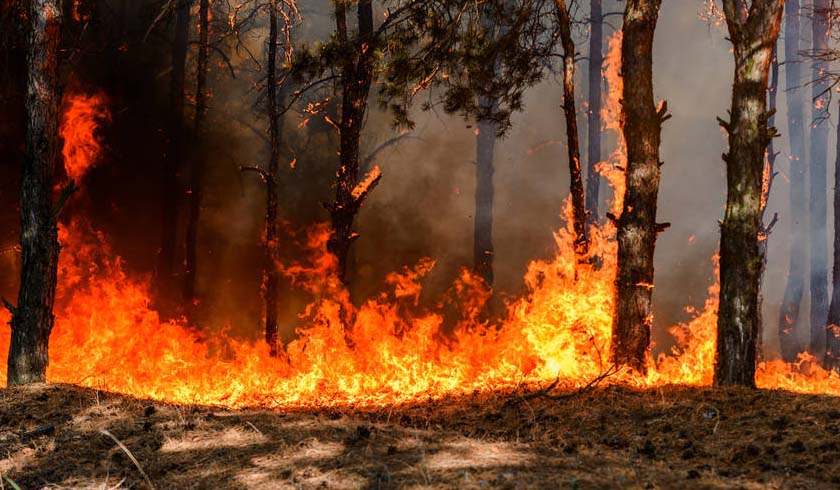Bushfires prompt warnings about insurance for investment properties
The bush fires raging in NSW on Wednesday are a reminder of the importance of making sure properties are properly insured.

The Rural Fire Service NSW confirmed to Smart Property Investment that properties have been destroyed in the Tingha Plateau area during Wednesday as bush fires rage across rural NSW, with the north-east of the state being placed under a total fire ban.
In order to manage the risk of bushfires to their own properties, Campbell Fuller of the Insurance Council of Australia said to Smart Property Investment that it is important for investors to consider where a loan fits within their overall risk profile.
“If the property is badly damaged or destroyed in a natural disaster, then the investor not only may still have a financial liability, but will also have to call on his or her own resources to recover … a loss of income from the property as well as damaged value of the asset itself,” Mr Fuller said.
“Many regions, right across Australia, have bushfire risk, and that bushfire risk can be at an extreme level or a very high level of exposure, and some of those areas may include the Blue Mountains in NSW, the alpine regions of Victoria, the coastal areas of Victoria.”
Buying in bushfire zones
One factor investors need to consider when buying in bushfire-prone areas, Mr Fuller said, is that any property that is destroyed and rebuilt will need to be done so to a new bush fire standard, which can increase the cost of both construction and insurance.
Therefore, property investors need to consider what their current policy covers, according to Sharon Fox-Slater, managing director of RentCover.
“Landlords should ensure that the policy they hold for the investment property covers bushfires in the first instance (not all do) and also be aware of any exclusions,” Ms Fox-Slater said to Smart Property Investment.
“For example, most policies do not provide cover for loss or damage where no flame damage has occurred, such as scorching, melting, heat, smoke, ash or soot.”
If properties are destroyed by fire, investors can also miss out on rental income, which standard home and contents cover is not applicable for.
“This can reach into the tens of thousands depending on how long a property takes to be repaired,” Ms Fox-Slater said.
“A comprehensive landlord policy should provide cover for loss of rent for an extended period … and also have some provisions if the property is destroyed.
“Insuring an investment property makes good business sense, but making sure that the right cover is in place that provides financial protection for the risks associated with bushfires is also prudent. Bushfires are devastating – don’t risk compounding the misery by being un- or under-insured.”
Finding the right insurance
To avoid having to rely on insurance in the first place, Mr Fuller said investors should be to first and foremost look at the risks that pose to the property itself, which according to Mr Fuller, is what insurers consider when determining the risk level.
“Properties, therefore, with a high risk of cyclone exposure, or high risk with bushfire exposure, or flood, or even properties that are in areas that are prone to hailstorms will typically pay a higher premium than those properties that are not exposed to those risks,” he said.
“In many cases, investors may be looking at purchasing properties that they can rent out in reasonable new housing estates. Assessing whether those housing estates are in vulnerable areas, as is an understanding of whether the property itself is capable of withstanding the damage that may occur from an extreme weather event.
“As part of the purchasing decision, understanding those risks, it will empower the investor to determine whether those risks are acceptable, and also, whether the cost of the insurance is something that they are factoring into the purchase price and the ongoing maintenance of the property itself.”
Investors who have standard home and contents cover instead of a specialist landlord cover need to make sure they won’t face any exclusions, as Ms Fox-Slater pointed out – many home and contents policies exclude business-related usage, which includes leasing it out.
“Having cover for the building and contents is essential, but so is having it insured for the right value,” she said.
“The sum insured needs to reflect current replacement costs. It is a false economy to purposely nominate a lower sum insured to lower the insurance premium, as if the property is damaged or destroyed the insurer will only pay out up to the sum insured and many have averaging provisions that reduce the sum paid out by a certain percentage when the sum insured is less than the value of the insured object, which could leave the policyholder tens or even hundreds of thousands of dollars out of pocket.
“It is also important for landlords to be aware of their obligations under cover, in particular the loss mitigation provisions. In most cases, the policyholder is required to take ‘reasonable’ steps to prevent further damage or loss. The top priority must always be protecting life, but some regard for limiting property losses should also be given.”

